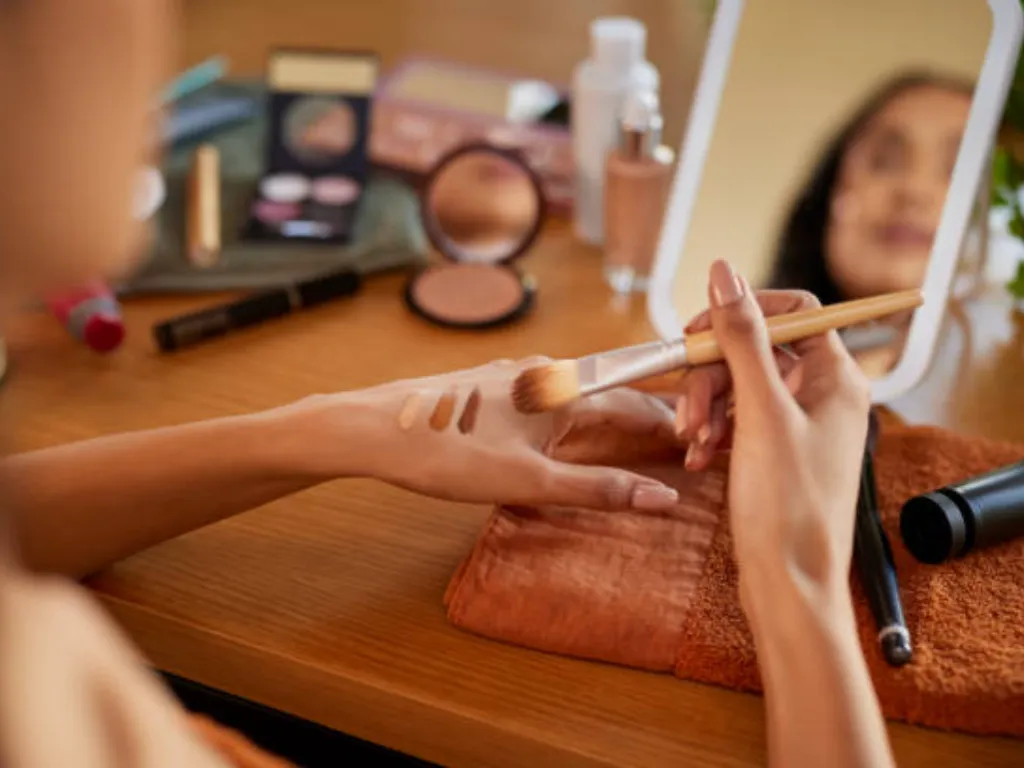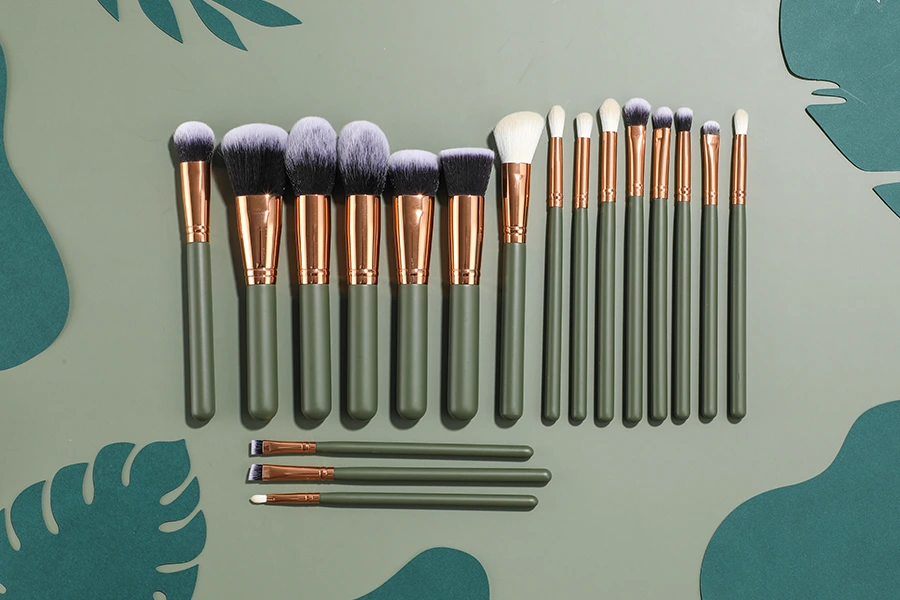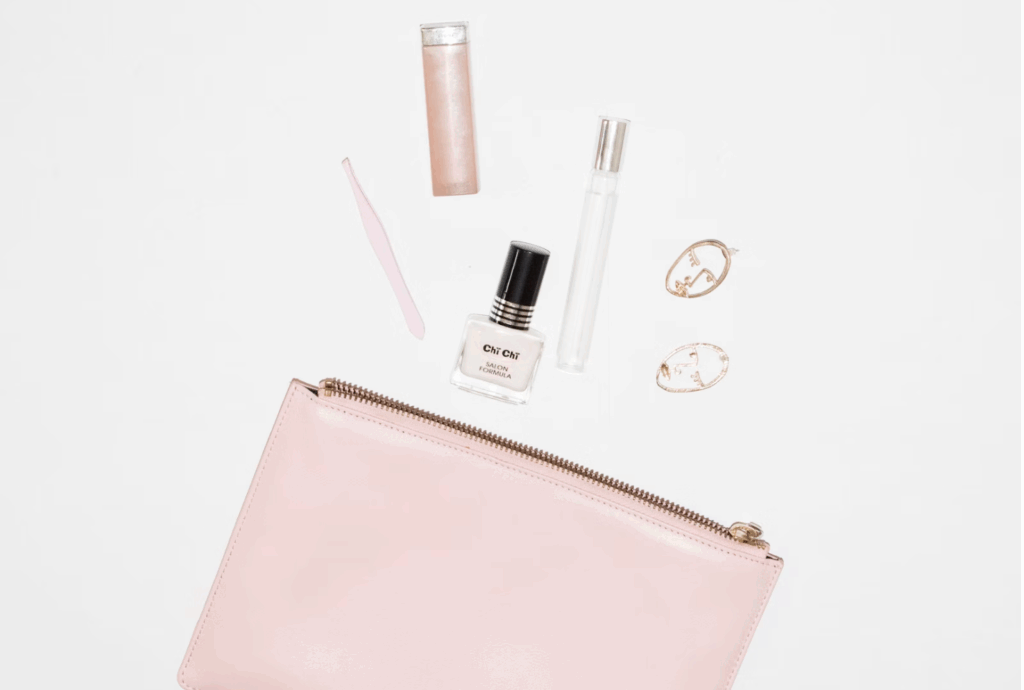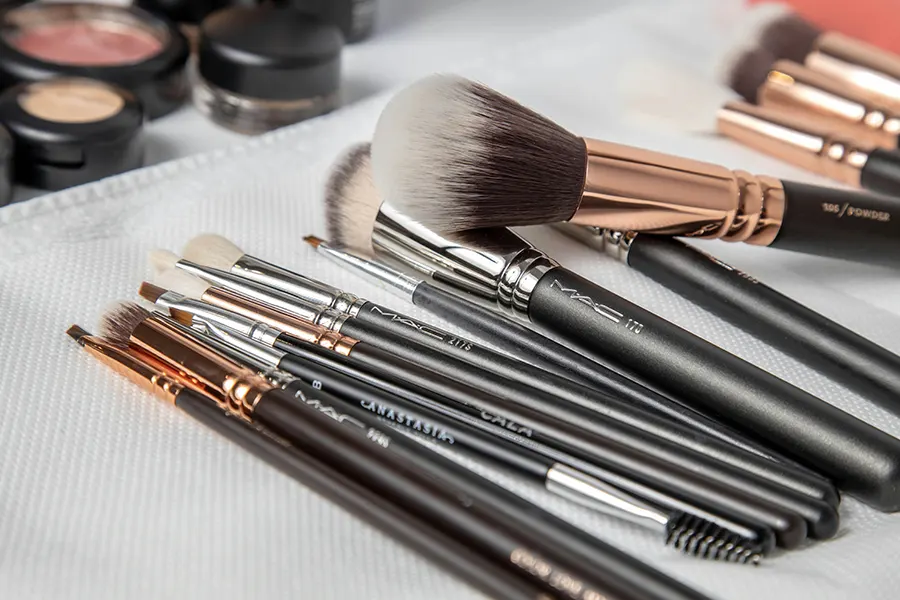Synthetic fibers are now at the heart of modern makeup brush design. They give manufacturers steady quality, easy upkeep, and ethical options without losing performance.
Whether you’re sourcing for a beauty brand or simply curious about how brushes are made, knowing the basics of these fibers can be eye-opening. In diesem Artikel, we’ll walk through the main types of synthetic fibers and how they’re used.
Was sind synthetische Fasern
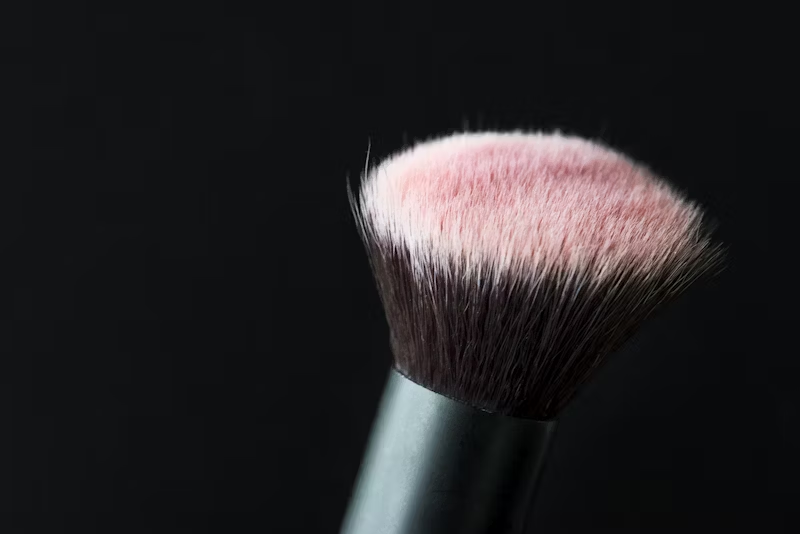
Definition of Synthetic Fibers
Synthetic fibers are man-made filaments produced from polymers rather than animal hair. In der Beauty-Branche, the most common base materials are nylon, Polyester, and newer bio-based polymers. These fibers are drawn into very fine threads, sometimes thinner than a human hair (about 50–70 microns), then bundled to form bristles.
Key Benefits of Synthetic Fibers
Modern makeup brushes use synthetic fibers for several reasons:
Design Flexibility: Manufacturers can shape each filament to be round, tapered or hollow, adjusting softness and product pickup. This level of control is not possible with natural hair.
Reliable Texture and Uniformity: Fibers are consistent in diameter and structure, providing predictable performance.
Better Product Retention: Synthetic bristles absorb less liquid or cream product, so more makeup goes on the skin rather than being wasted in the brush.
Easy Cleaning and Hygiene: Brushes dry faster and are easier to clean, which reduces bacteria build-up and extends their lifespan.
Common Types of Synthetic Fibers
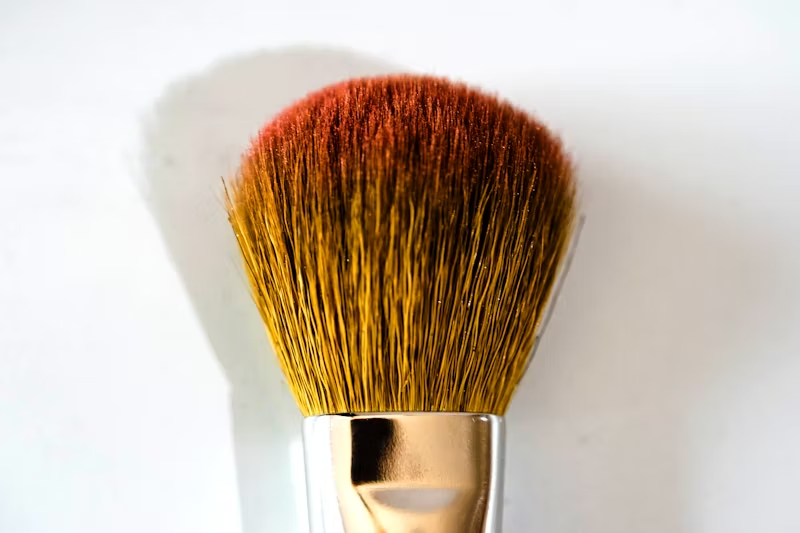
Nylon (Polyamide)
Nylon has been a staple in brushes since the 1940s. For your precision work, like eyebrows or eyeliner, nylon offers firm yet flexible bristles with a smooth surface. Average fiber diameters range from 0.07 Zu 0.12 mm, giving you control without excessive bending. Be aware that if the tips are not polished properly, nylon can feel slightly scratchy, so always check that your supplier uses quality tip-polishing techniques.
Ascabon (Refined Polyester)
Taklon is a type of polyester treated to mimic natural sable hair. It can be extremely fine, around 0.05 mm, which gives you a silky touch perfect for blending eyeshadow or applying liquid foundation. Many brands you may work with choose Taklon because it performs like animal hair while remaining vegan-friendly. Using Taklon brushes can make delicate blending much easier and more consistent.
PBT (Polybutylene Terephthalate)
PBT is a sturdier polyester that can handle repeated cleaning and high temperatures. If you are selecting brushes for professional kits that will be sanitized frequently, PBT is a strong candidate. These fibers can maintain their shape for over 200 washes when processed correctly, meaning your brushes will stay reliable and durable over time.
Micro-Crimped or Textured Fibers
Some modern brushes feature micro-crimped fibers. Small crimps along the strands increase the surface area, allowing your brush to pick up and hold more powder. Tests by reputable suppliers show these fibers can improve powder retention by 15–20% compared with straight fibers of the same diameter. They are ideal if you want even application with blush, Pulver beenden, or bronzers.
How Different Synthetic Fibers Affect Brush Performance
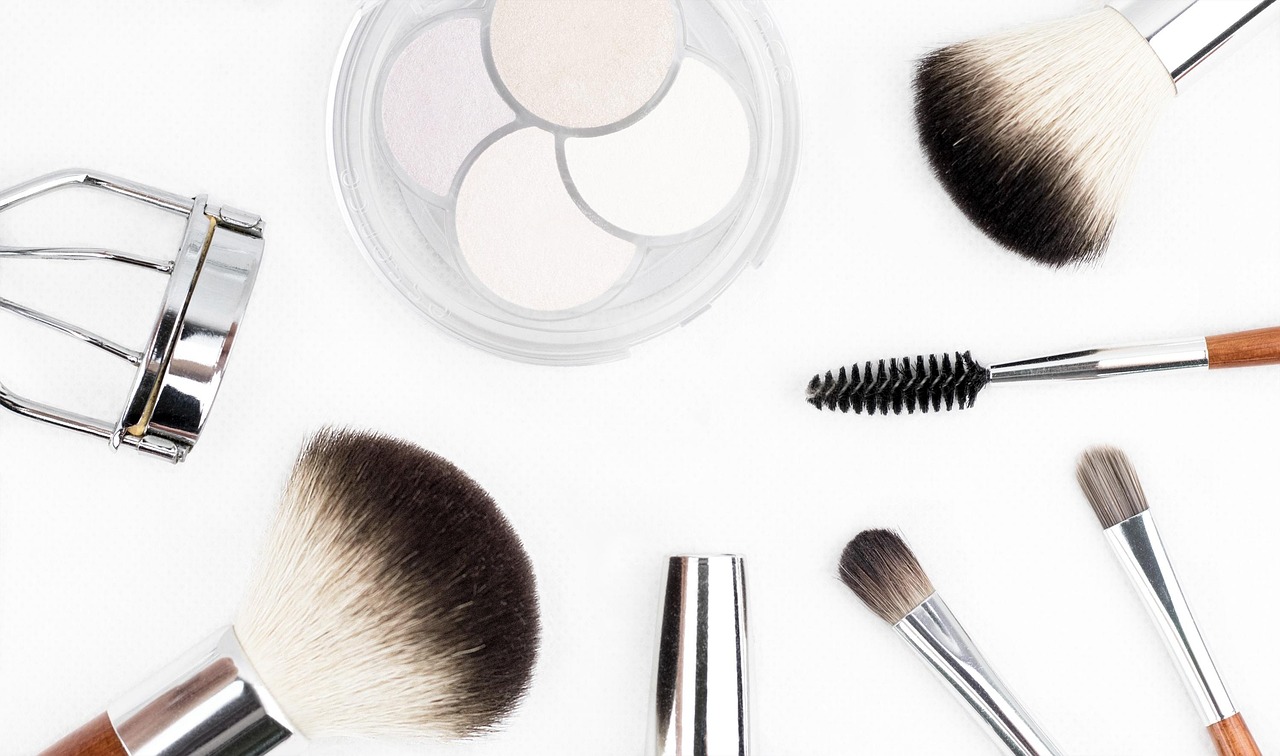
Ascabon
Textur & Feel: Taklon fibers are smooth and soft, closely mimicking the feel of natural hair. They glide easily across the skin, making them comfortable for sensitive areas such as under the eyes or along the cheekbones.
Leistung: Taklon performs exceptionally well with liquid and cream products. It allows seamless blending and moderate product retention, ensuring that makeup goes on evenly without streaking or clumping.
Am besten für: Stiftung, Concealer, cream blush, and blending brushes where a gentle touch and smooth finish are essential.
Nylon
Textur & Feel: Nylon fibers are firmer and slightly more resilient than Taklon, offering good spring and structure. They feel smooth but maintain control, which is important for precision work.
Leistung: Nylon holds powders effectively, especially loose pigments, and releases them in a controlled manner. Its stiffness allows you to create sharp lines and defined edges while minimizing fallout.
Am besten für: Eyebrow brushes, eyeliner brushes, and other precision tools that require accuracy and stability.
PBT (Polybutylene Terephthalate)
Textur & Feel: PBT fibers are smooth, dicht, and highly durable. They retain their shape after repeated washing and resist fraying or splitting, making them suitable for professional settings.
Leistung: PBT is excellent for both liquid and powder products. It maintains consistent performance over time, can withstand heat during cleaning, and releases product evenly. Its durability ensures long-term reliability.
Am besten für: All-purpose brushes, Fundamentbürsten, powder brushes, and any tool intended for repeated professional use.
Micro-Crimped or Textured Fibers
Textur & Feel: These fibers feature subtle crimps or textures along the strands, giving them slightly more grip compared with straight fibers. They feel soft yet structured, offering a balance between comfort and product control.
Leistung: Crimped fibers increase surface area, allowing the brush to pick up and hold more powder while distributing it evenly. This reduces waste and provides smooth, consistent coverage.
Am besten für: Pulverbürsten, blush brushes, Bronzer, and any application requiring efficient product pickup and even application.
Caring for Brushes Made from Different Fibers
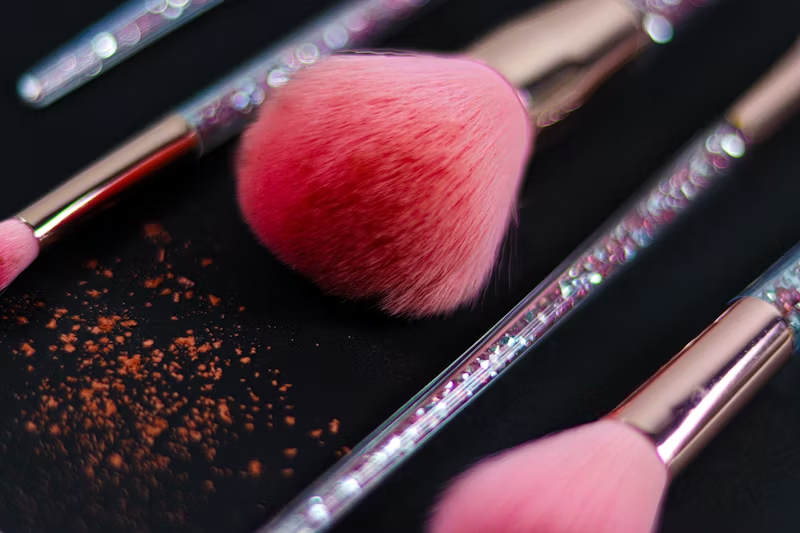
Taking proper care of your synthetic brushes helps maximize their lifespan and get better performance. Each fiber type has its own maintenance needs, so focusing on the basics will give you reliable results.
- Ascabon: Use mild soap or a brush cleanser with lukewarm water. Swirl gently without pressing hard, then reshape and dry flat or with bristles pointing down. This prevents water from loosening the ferrule and keeps the fibers soft.
- Nylon: Clean with lukewarm water and a gentle cleanser to remove residue. These fibers can handle slightly firmer cleaning, but avoid twisting the tips. Reshape after rinsing to maintain precision.
- PBT (Polybutylene Terephthalate): Highly durable fibers that tolerate frequent cleaning. Use warm water and mild detergent, then dry flat or downward to protect the glue at the base. Regular care keeps them in shape for professional use.
- Micro-Crimped or Textured Fibers: Handle carefully to preserve their structure. Wash with gentle soap and lukewarm water, massaging lightly. Avoid heavy pressure to prevent flattening the crimps. Dry naturally after reshaping.
- General Tip for All Fibers: Do not soak brushes in water for long periods. Avoid hot water or harsh chemicals that weaken fibers. Store brushes upright or in a case to prevent deformation and bacterial buildup.
Letzte Gedanken
Synthetic fibers have reshaped what makeup brushes can do, giving manufacturers reliable quality and consumers consistent results. By understanding how each fiber type feels and performs, you can make smarter sourcing decisions and create brushes that truly fit your brand’s goals.
Looking for well-designed synthetic fiber brushes that balance performance and value? Check out BS-Mall Beauty’s selection of Umweltfreundliche Make-up-Bürsten, Weiche Mischpinsel, und hochwertige Augenbürsten. BS-Mall Beauty offers a versatile range of options to help you source with confidence and elevate your product line.
FAQs
1. Woraus bestehen synthetische Make-up-Pinsel??
Synthetische Make-up-Bürsten werden typischerweise aus künstlichen Materialien wie Nylon hergestellt, Polyester, oder Taklon -Fasern. Diese Materialien sind so konzipiert, dass sie die Leistung von natürlichen Haaren imitieren, während sie grausamkeitsfrei und langlebiger sind.
2. Sind synthetische Bürsten für Flüssigkeits- und Cremeprodukte geeignet?
Ja, Synthetische Bürsten sind ideal zum Auftragen von Flüssig- und Cremeprodukten wie Foundation und Concealer. Ihre nicht-porösen Borsten verhindern eine übermäßige Produktabsorption, Gewährleistung einer reibungslosen und sogar Anwendung.
3. Sind synthetische Bürsten für empfindliche Haut geeignet?
Absolut. Synthetische Pinsel sind hypoallergen und verursachen weniger wahrscheinlich Reizungen im Vergleich zu natürlichen Haarbürsten, Sie sind eine großartige Wahl für Personen mit empfindlicher Haut oder Allergien.
4. Wie oft sollte ich meine synthetischen Make -up -Pinsel reinigen?
Es wird empfohlen Reinigen Sie Ihre synthetischen Bürsten mindestens einmal pro Woche, um Produktanbau und Bakterien zu entfernen. Verwenden Sie eine sanfte Gerichtseife oder einen Bürstenreiniger, gründlich ausspülen, die Borsten umformen, und lass sie luft trocknen.
5. Wie kann ich feststellen, ob mein synthetischer Pinsel von guter Qualität ist?
A Hochwertiger synthetischer Make-up-Pinsel sollte weich haben, dicht gepackte Borsten, die nicht leicht vergießen. Der Griff sollte robust sein, und die Ferrule (Metallteil) sollte sicher beigefügt sein. Zusätzlich, Die Borsten sollten nach der Reinigung in ihre ursprüngliche Form zurückgehen.













